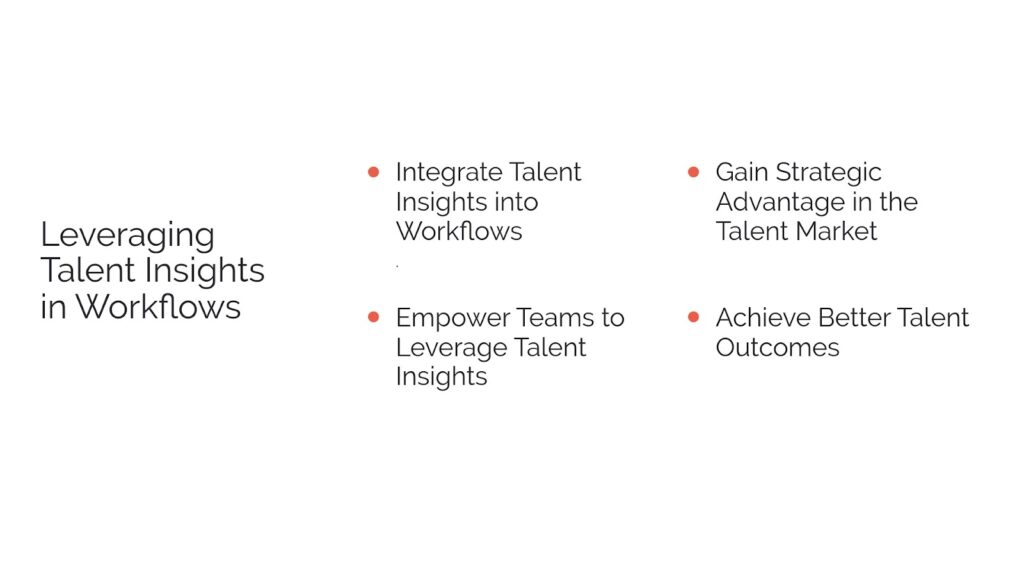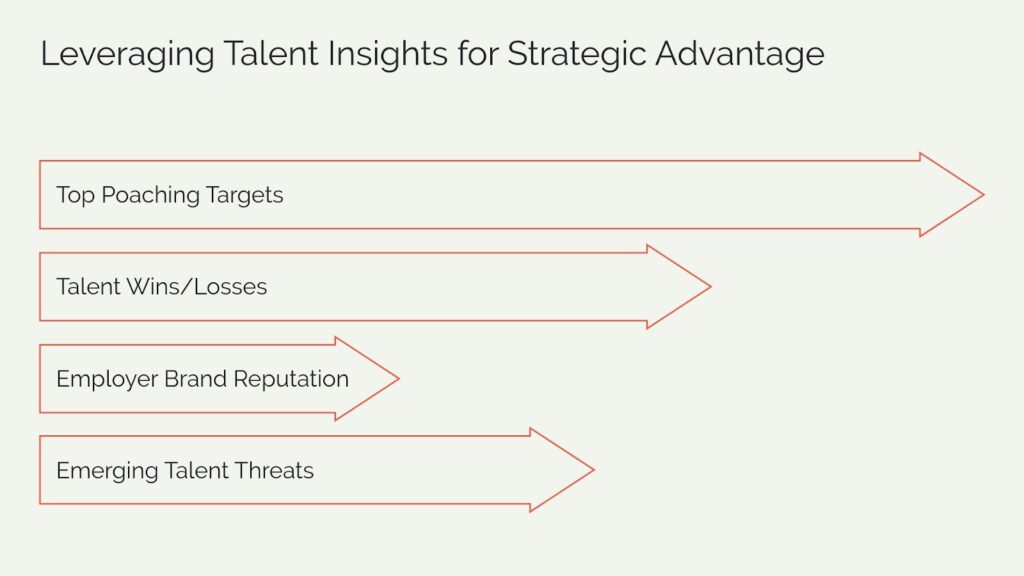In today’s fast-paced and data-rich world, companies increasingly use advanced analytics to inform their businesses. One area where data analytics have succeeded is talent management. Specifically, data aggregation can offer deeper insights into talent pools that enable businesses to better recruit and plan workforce strategies. By utilizing aggregated data, consulting firms and businesses can optimize long term workforce planning, minimize risks associated with recruiting, and also strengthen their talent strategies.
What is Data Aggregation?
At its core, data aggregation is the process of collecting and combining data from multiple sources to create a comprehensive dataset that can be analyzed to uncover trends, patterns, and actionable insights. By drawing from a variety of data sources, organizations can gain a holistic view of a particular subject, such as their talent pool or industry trends.
Data aggregation is often used in various industries to track consumer behavior, identify market trends, or analyze financial data. When applied to human resources and talent management, it can provide a wealth of insights into employee performance, skills availability, and labor market trends, which helps businesses improve their recruitment and retention efforts.
The Importance of Data Aggregation in Talent Insights
Organizations are facing several challenges in attracting and retaining talent. Whether it’s a shortage of highly specialized skills, increased competition for top-tier talent, or the need for more diverse teams, effective workforce planning requires deeper, more granular insights into the available talent pool.
This is where data aggregation becomes an invaluable asset. By pulling data from multiple sources—such as recruitment platforms, social media, employee records, and market data—companies can develop a much clearer picture of the talent landscape.

Benefits of Data Aggregation for Talent Insights
- Comprehensive Talent Pool Analysis
Rather than relying on a single data source, data aggregation tools collect and integrate data from various platforms like LinkedIn, job boards, and internal HR systems. This allows for a broader, more accurate analysis of the talent pool, including skills availability, location trends, salary benchmarks, and more.
- Improved Recruitment Strategies
With deeper insights, organizations can make more informed hiring decisions. Aggregated data provides an understanding of candidate behavior and market conditions, making it easier to identify the right candidates faster. For example, analyzing LinkedIn profiles alongside job application data might reveal patterns about which candidates are more likely to succeed in particular roles.
- Enhanced Workforce Planning
Aggregated data can help predict future workforce needs based on historical trends, enabling companies to align recruitment efforts with business growth plans. Workforce planning becomes more strategic when data reveals gaps in talent, anticipated turnover, or changing market demands.
- Competitive Talent Intelligence
By utilizing platforms like LinkedIn Talent Insights, companies can benchmark their talent pool against competitors. Aggregated data from LinkedIn profiles and other sources help organizations understand where top talent is going, what skills are in demand, and how competitive their compensation packages are.
- Diversity and Inclusion Initiatives
Data aggregation also supports diversity and inclusion efforts by providing insights into the gender, ethnic, and cultural composition of a company’s workforce. Aggregating data from various sources allows companies to assess their progress toward achieving diversity goals, identify gaps, and make targeted improvements.
How Data Aggregation Works in Talent Insights
To effectively harness data aggregation for talent insights, companies need to follow a structured approach:
Step 1: Data Collection from Multiple Sources
The first step in data aggregation is to collect data from multiple relevant sources. This could include internal databases (such as HR systems or employee surveys), external sources (like recruitment platforms, market research, or LinkedIn Talent Insights), and even public data (such as labor market statistics or industry reports).
The goal is to gather as much relevant data as possible to create a rich dataset that provides a 360-degree view of the talent landscape.
Step 2: Data Cleaning and Normalization
Once data is collected, it needs to be cleaned and standardized to ensure accuracy. Data aggregation tools often perform this task automatically, but it’s critical to ensure that the data is consistent and error-free. For instance, if one data source uses different naming conventions for job titles or locations, these differences must be reconciled before analysis.
Step 3: Data Integration and Analysis
Once the data is cleaned, it’s integrated into a unified system for analysis. Advanced analytics can then be applied to identify trends, correlations, and insights. Machine learning algorithms can also be used to predict future trends based on historical data.
For example, analyzing data from LinkedIn Talent Insights alongside internal data can reveal trends in talent mobility, skill shortages, or geographic concentrations of specific skill sets.
Step 4: Actionable Insights and Strategic Decision-Making
The final step is to translate aggregated data into actionable insights. This involves presenting the findings in a way that supports strategic decision-making, such as optimizing recruitment strategies, tailoring employee development programs, or adjusting compensation packages to stay competitive.
Data Aggregation Tools for Talent Insights
There are several data aggregation tools available to help organizations gain deeper insights into their talent pools. Some of the most popular tools include:
- LinkedIn Talent Insights
One of the leading platforms for aggregated talent data, LinkedIn Talent Insights provides organizations with access to real-time data on the talent market. With over 774 million members globally, LinkedIn offers an extensive dataset on workforce trends, skill availability, and competitive intelligence.
By aggregating data from LinkedIn profiles, Talent Insights allows companies to benchmark their talent pool against competitors, understand the demand for specific skills, and optimize their recruitment efforts based on data-driven insights.
- JobsPikr
JobsPikr is an AI-powered data aggregation tool that specializes in job market data. It automatically extracts job listings from company websites, job boards, and other recruitment platforms, providing real-time labor market intelligence. With its ability to aggregate job listings across industries and locations, JobsPikr enables companies to stay ahead of hiring trends, forecast talent demands, and conduct competitive analysis. The tool’s API integration also allows consulting firms to automate data aggregation and incorporate real-time job data into their internal systems.
- Workday
Workday is a cloud-based human capital management (HCM) platform that aggregates employee data, enabling organizations to manage their workforce more effectively. Workday collects data on employee performance, compensation, and retention rates, helping companies identify areas for improvement in talent management.
- Tableau
A powerful data visualization tool, Tableau can aggregate data from multiple sources to help HR teams visualize talent trends and make more informed decisions. Tableau’s easy-to-use interface allows organizations to create dashboards that track key HR metrics, such as employee engagement, turnover, and diversity.
- Eightfold.ai
Eightfold.ai uses machine learning to analyze aggregated data from various sources, including resumes, social media profiles, and internal databases, to match candidates with job opportunities. By analyzing large volumes of data, Eightfold.ai can help organizations identify talent with the right skills and potential, even if they are not actively looking for a job.
Leveraging Talent Insights for Enhanced Talent Strategies
Talent insights offer a powerful way for companies to gather and analyze comprehensive data about the workforce. By tapping into a wide range of information sources, these insights provide HR professionals and consulting firms with up-to-date data on talent availability, in-demand skills, and workforce trends.

Here’s how leveraging talent insights can significantly enhance your talent strategies:
- Competitive Benchmarking
Talent insights allow organizations to compare their talent pool with that of competitors. This benchmarking helps firms understand where top talent is being hired, identify the skills most sought after in the market, and evaluate how they measure up in terms of compensation, skill proficiency, and geographic distribution.
- Geographic Talent Distribution
Talent insights offer a clear view of where specific skill sets are concentrated across different regions. This helps businesses make informed decisions about where to expand operations, relocate employees, or direct recruitment efforts. For instance, if a company is seeking a particular expertise, talent insights can reveal the cities or regions with the highest concentration of professionals possessing those skills.
- Skill Gap Analysis
By analyzing workforce data, companies can conduct skill gap analysis to identify which competencies are in high demand and whether their current team meets these needs. This data is invaluable for guiding both hiring strategies and the development of targeted employee training programs to bridge identified gaps.
- Workforce Diversity Analysis
Talent insights also enable organizations to evaluate the diversity of their workforce, considering factors like gender, ethnicity, or educational background. This information is critical for businesses committed to enhancing diversity and inclusion efforts, helping them to track progress and implement more effective diversity initiatives.
By utilizing talent insights, companies can create data-driven strategies to stay competitive, improve workforce planning, and foster a more diverse and skilled talent pool.
Conclusion: The Future of Talent Insights Lies in Data Aggregation
As competition for top talent intensifies, data aggregation has become an indispensable tool for HR teams and consulting firms aiming to optimize recruitment strategies and workforce planning. By collecting and analyzing data from multiple sources, organizations can gain a deeper understanding of talent pools, uncover emerging trends, and make more informed decisions.
Whether through powerful platforms like JobsPikr, consulting firms can leverage aggregated data to provide clients with actionable, real-time insights that drive success in the talent marketplace.



